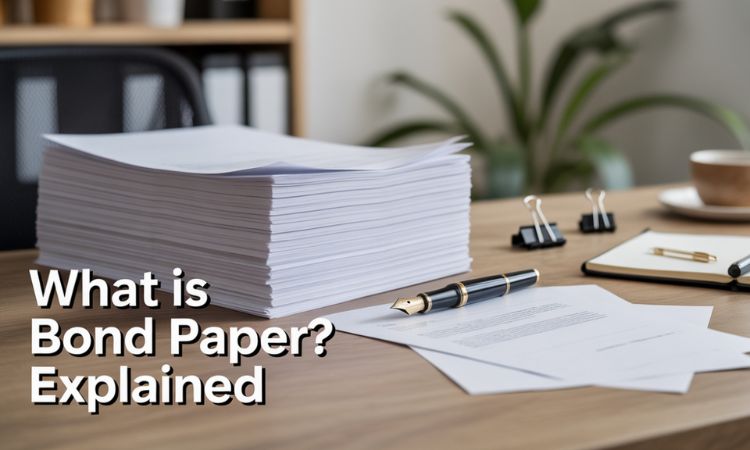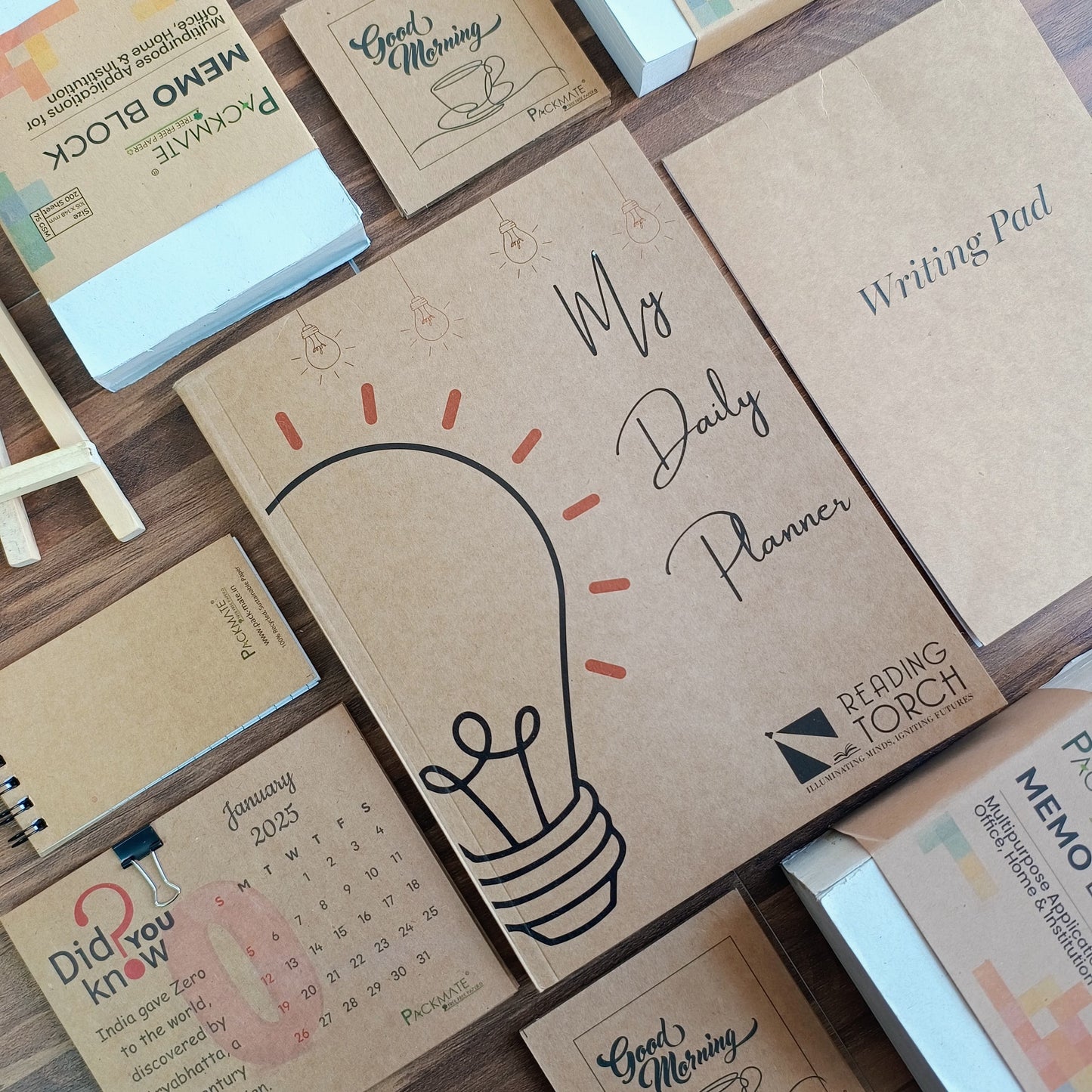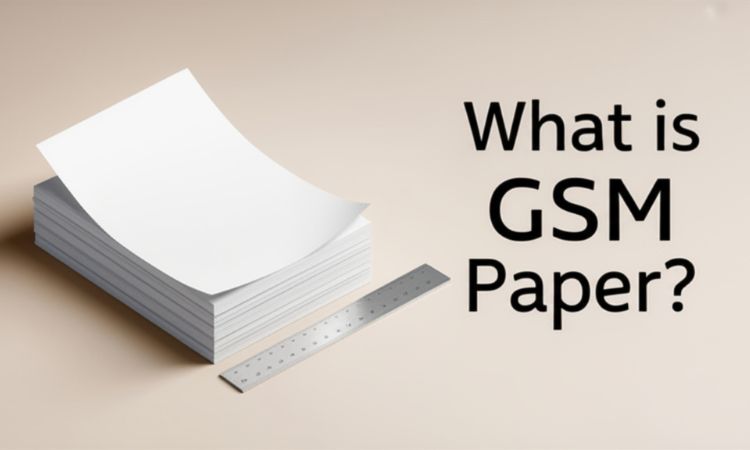
Have you ever felt the need to use thicker, stronger paper for important documents instead of normal paper and wondered where you should start looking for them? What are its types? Yes, those are Bond papers. If you want a professional look for your documents and want them to last longer than normal copy paper, these are what you should be looking for.
Bond paper is an exceptional choice when printing resumes, business letters, contracts, and even for photography projects or certificates. You may even find a certain type of bond paper has a watermark providing an air of authenticity and security. If you are working on a job application or need to print and have something in your hands repeatedly, bond paper will make your work pop and last longer.
If you have any questions regarding bond paper, its types and uses in your mind, rest assured that we cover everything about bond paper in this article.
What is Bond Paper?

Bond paper is a thick, sturdy, high quality paper which is especially made for official documents, certification, and legal papers. It is known for its strength, durability, smooth surface and ability to hold ink on it.
The physical makeup of bond paper is primarily cotton fibers or a mixture of cotton and wood pulp, which creates a smooth and durable paper that is stronger than basic paper.
It's common to find it in schools, offices, and other professional places because of its clean look and smooth surface. At first it was made for printing government bonds but later it started getting used for other purposes as well. Let's begin by learning its earlier use.
Origin and History of Bond Paper

Bond paper gets its name from the history of getting used in printing government bonds. The “bond” in bond paper is taken from government bonds. It was originally made for the use of government bonds but as the time passed it started getting used in other things too.
In the 19th century, the government needed a good quality paper which can be dependable and durable, have strength, and hold ink. That was the moment when bond paper was created to print government bonds. Later it got popular because of smoothness and cleanliness and started getting used in many things like official letters, legal forms and business documents.
Key Features of Bond Paper
Bond paper offers many benefits over normal paper. Let’s list some of its key features and fully understand the need of a bond paper in certain situations.
1. High quality
Nowadays quality is everything, even for a paper. First impressions obviously matter. Bond paper is durable, strong and smooth which conveys an unspoken message that said document is of importance. It demands attention.
2. Strong and durable
Bond paper is made with strong wood pulps and high quality cotton fibres which makes it stronger and hard to tear compared to regular paper. That’s why it is used for archival purposes. Bond paper lasts longer without sustaining much damage.
3. Smooth surface
A smooth surface makes it easier to write on paper. This paper has a smooth and clean look. The smooth surface also lends it an elegant finish and shiny appearance, further adding to the impression you want to make.
4. Printer friendly
Bond paper is printer friendly, it can be used in typewriters, laser printers and inkjet printers. You will find them to be compatible with most devices despite their different size.
5. Suitable for official use
Bond paper was made for government bonds in the first place. It can be suitable for official use because of its quality. Official documents also need to be stored for a longer time. Bond papers are known to be durable.
6. Available in white and light colours
Mostly paper comes in white colour, bond paper also comes in white colour but sometimes it can also be light blue colour or other light colours. Bond papers can also be watermarked when required.
Types of Bond Paper
Bond papers, though all thick and sturdy, can come with different specifications that serve different purposes. Let’s look at the types of bond papers available.
1. Bond Paper
This is the typical high-quality, uncoated bond paper used for standard printing, photocopying, and writing. It’s mostly used in office memos and reports.
2. Watermarked Bond Paper
It has a design or logo blown into the paper that can only be seen when you hold it against a bright light. You use this for authenticity with documents. Examples: legal documents and certificates.
3. Colored Bond Paper
There are many different colors of bond paper available, and it may be used to help organize files or simply to add creativity to your communication. Examples: color-coded office forms or invitations to an office function.
4. Recycled Bond Paper
This is made of recycled materials, so is sustainable, and usable for sustainable printing. You may see them used in businesses that emphasize environmentally conscious practices.
5. Pre-printed Bond Paper
This has the company letterhead or logo already printed on it. It's likely to be used because of the convenience or time savings. You can mostly use the in business correspondence, proposals on a company's letterhead or logo.
Common GSM Ranges of Bond Paper
GSM stands for Grams per Square Meter indicating the weight of every square meter of paper. It’s used as a measure of paper weight and thickness. Bond papers come in the following ranges:
-
70–80 GSM: This range is relatively lightweight and cost-effective, ideal for bulk printing and internal office documents.
-
90–100 GSM: This kind of paper is standard for high-quality printing and has that premium feel in your reports and letters.
-
120 GSM and above: These are thicker and more durable. They would be best for certificates, official letters, or print outs that need some longevity.
Bond Paper vs Regular Paper:
| Feature | Bond Paper | Regular Paper |
|---|---|---|
| Material | Often made by 100% cotton or high-quality pulp. | Mostly made up of wood pulp. |
| Texture | It’s smoother and sometimes comes with a watermark. | Maybe either—smoother or rougher. No watermark present. |
| Durability | More durable. Resists yellowing. | Less durable. Yellows over time. |
| Ink Absorption | Better, prevents smudging | Standard, may smudge |
| Common GSM | 70–120+ GSM | 70–80 GSM |
| Typical Use | This paper is mostly used for official, legal, and creative documents. | Can be used in everyday printing, drafts etc. |
| Archival Quality | Acid-free and archival as official documents need to be stored for longer periods. | It’s not always archival due to low quality. |
Where is Bond Paper Used?
Following is a list of various situations that demand the use of bond papers due to its sturdy quality and professional appearance.
- For Legal Documents: Contracts, affidavits and agreements are best printed on bond paper for added durability and authenticity.
-
Educational Materials: You’ll usually see certificates, diplomas and student report cards printed on bond paper for a formal touch.
-
For Creative Uses: Bond paper can be used for resumes, brochures, menus and invitations, giving them a different appearance than standard white paper.
-
Technical Drawings: Whenever architects and engineers do blueprints or design documents, they use bond paper because of its durability.
Is Bond Paper Environmentally Friendly?
Bond paper can be environmentally friendly, especially if made from recycled components or if they come from sustainable certified sources. There are many brands that now provide recycled printing paper alternatives that decrease your carbon footprint while still offering you a good quality paper.
Always check for eco-labels or certifications when sustainability is important to you. Everyone must be motivated and willing to contribute for the safety of our environment, as much as they can.
Tips for Choosing the Right Bond Paper
We have discussed the types of bond paper and the purposes it is used for. Let's look at some suggestions that will help you determine the right type of bond paper based on your needs.
-
Think about GSM: When printing important documents or certificates, you should choose a higher GSM(thicker paper). For everyday writing, pick a lower GSM.
-
Select Watermarked for Legal: Remember to always use watermarked bond paper when you require authenticity and security for legal or official papers.
-
Select Colour for Organizational or Branding: You may use coloured bond paper to organize your files or add a bit of colour to your branding.
-
Match to Printer Compatibilit: Always check that the bond paper GSM and size is suitable for my printer to avoid jams and imperfections in printed documents.
-
Select Recycled Paper: If you are conscious about the environmental needs, you can use recycled bond paper for your everyday printing needs.
Where to Buy Bond Paper?
- You can find bond paper at most office supply retailers. Try searching locally, or in super markets.
- You may find Bond Papers through the internet as well. E-commerce websites offer good deals and a wide variety.
- Packmate is recognized as one of the best eco-friendly paper brands in India, known for offering top-quality recycled bond paper. You can also buy bond paper in bulk along with other recycled paper products ideal for office use. Visit our website to learn more.
Conclusion
Knowing what bond papers are and what additional benefits they offer, will help you make informed decisions for your printing and writing purposes. Whether you are looking for strength, a professional appearance, or eco-friendly recycled printing paper, bond paper can be one of the best options available.
From corporate reports to legal contracts to educational certificates, having the right bond paper will elevate the quality and image of your work. Step up your game and start using high-quality bond paper for your important prints.







